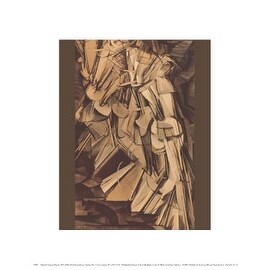
Posted on 11/16/2025 1:55:04 PM PST by E. Pluribus Unum

While many argue that "modern art" began in the 1800s, could it actually have started with Joseph Wright of Derby's An Experiment on a Bird in the Air Pump, nearly a century before?
What is "modern art"? It seems like a simple question, but critics and art historians have quarrelled about it for decades without agreement. Nor is there any consensus about which artwork marks the turning point between "traditional" and "modern".
Many point to the 1800s – and paintings like Le Déjeuner sur l'Herbe (1863) by Édouard Manet, Rain, Steam, and Speed - The Great Western Railway (1844) by JMW Turner, and The Third of May 1808 (1814) by Francisco Goya, who was described by the art critic Robert Hughes as "the first modern artist and the last old master".
A new exhibition at the National Gallery in London reminds us that there is another contender in the ring. It's a painting that has some of the key ingredients of modern art, decades ahead of its time: Joseph Wright of Derby's An Experiment on a Bird in the Air Pump (1768).
At the centre is a scientist with one hand on the valve which allows air in and out of the glass container. On the table is the air pump. The spectators react to the spectacle of the suffocating bird in different ways. On the left, a young couple seem more interested in checking each other out than the experiment. On the right, two young girls react in horror at the act of animal cruelty. The men nearest us seem able to control their horror. A young boy in the back lowers a curtain to block out...
(Excerpt) Read more at bbc.com ...
Ah, no.
I suppose I’m just a peasant, but when I think of “modern art” I mostly think of art responding to photography. You want realism? Here is a photograph. What can painting offer that is better than photographic realism? Well, the painter can offer subjective impressions and alternative ways of seeing the world. Turner, Seurat, Van Gogh, Picasso, Pollock — they did what photographs could not do. Joseph Wright of Derby? I think it’s a stretch to call it modern art.


when one adds all the fake imagery out today from people to space to geography, everything “art”, everything real, is destroyed...
Alas, I like you, am too simple minded to grasp what’s being discussed here. Although admittedly it was hard to read as my eyes rolled back in my head while reading g the article
Nice shadows and color. Five bucks @ the yard sale.
I think the invention of photography, and of moving pictures, had a profound effect on artists.
If you look at the picture “Nude Descending a Staircase,” by Marcel Duchamp, you can see he’s just superimposing a bunch of individual frames from a film of a woman descending a staircase, although he puts an abstract expressionism spin on each frame.
Perhaps modern art was born out of a desire on the part of some painters who said themselves “photography has made realism obsolete, so why not go in the opposite direction, from hyper-concrete to hyper-abstract?”
I’m connecting this in my mind to the case of trombonist George Roberts. When he came to Hollywood in 1947, after serving in the Navy, George Roberts dove into the LA music scene.
He quickly realized that “going high” on the trombone was territory already well-explored by Urbie Green and others.
So George Roberts decided to “go low.” He proceeded to make himself into the best bass trombonist in the business, and became a favorite of numerous band leaders and singers.
Artists have to try to find a competitive edge, a niche, if they’re going to make a living doing what they love.
Perhaps “modern art” was just a reaction to the observation that photography and cinema had completely locked up the “land of photorealistic art. So let’s look elsewhere.
Somebody had to post it. 😉
Wow, that’s a magnificent painting. The light, the faces, the hands, the expressions, the curiosity about the scene are all spectacular. I never heard of Joseph Wright before.

Ha ha! Good one.
I used to look at it, in the Philadelphia Museum of Art.
One day, I “got it.” I understood it. It’s just a movie of a woman descending a staircase. The “nude” bit is a matter of interpretation.
You can imagine what it must have felt like, to have been a serious painter, to have devoted your life to it, or (if you were young) to have decided to devote your life to it.
Then one day, you hear about photography. You see some early photographs. You realize “I’m never going to make a dime at this.”
What do you do?
Well, you’re creative, right? That’s why your an artist. So you don’t give up, you get creative.
I was going to say the same exact thing. Thanks.

Made large so you can scroll the details.
Actually, Arcimboldo the Marvelous is the fountainhead of much 20th century art, like surrealism, dada, Pick-Ass-Oh, and those dogs playing poker, IMHO.
https://search.brave.com/images?q=giuseppe+arcimboldo
Anyway, the other nominees from the article:
https://search.brave.com/images?q=Le+D%C3%A9jeuner+sur+l%27Herbe
https://search.brave.com/images?q=Rain%2C+Steam%2C+and+Speed+-+The+Great+Western+Railway
https://search.brave.com/images?q=The+Third+of+May+1808
I think my sister graduated with Art Deco.
Matthias Grünewald, inner right wing of the Isenheim Altarpiece depicting the Temptation of St. Anthony, 1512–1516 (oil on panel)
I would have figured Bosch or that other guy. (Saturn painter).
It’s the same parlor where the dogs were playing poker.
Disclaimer: Opinions posted on Free Republic are those of the individual posters and do not necessarily represent the opinion of Free Republic or its management. All materials posted herein are protected by copyright law and the exemption for fair use of copyrighted works.